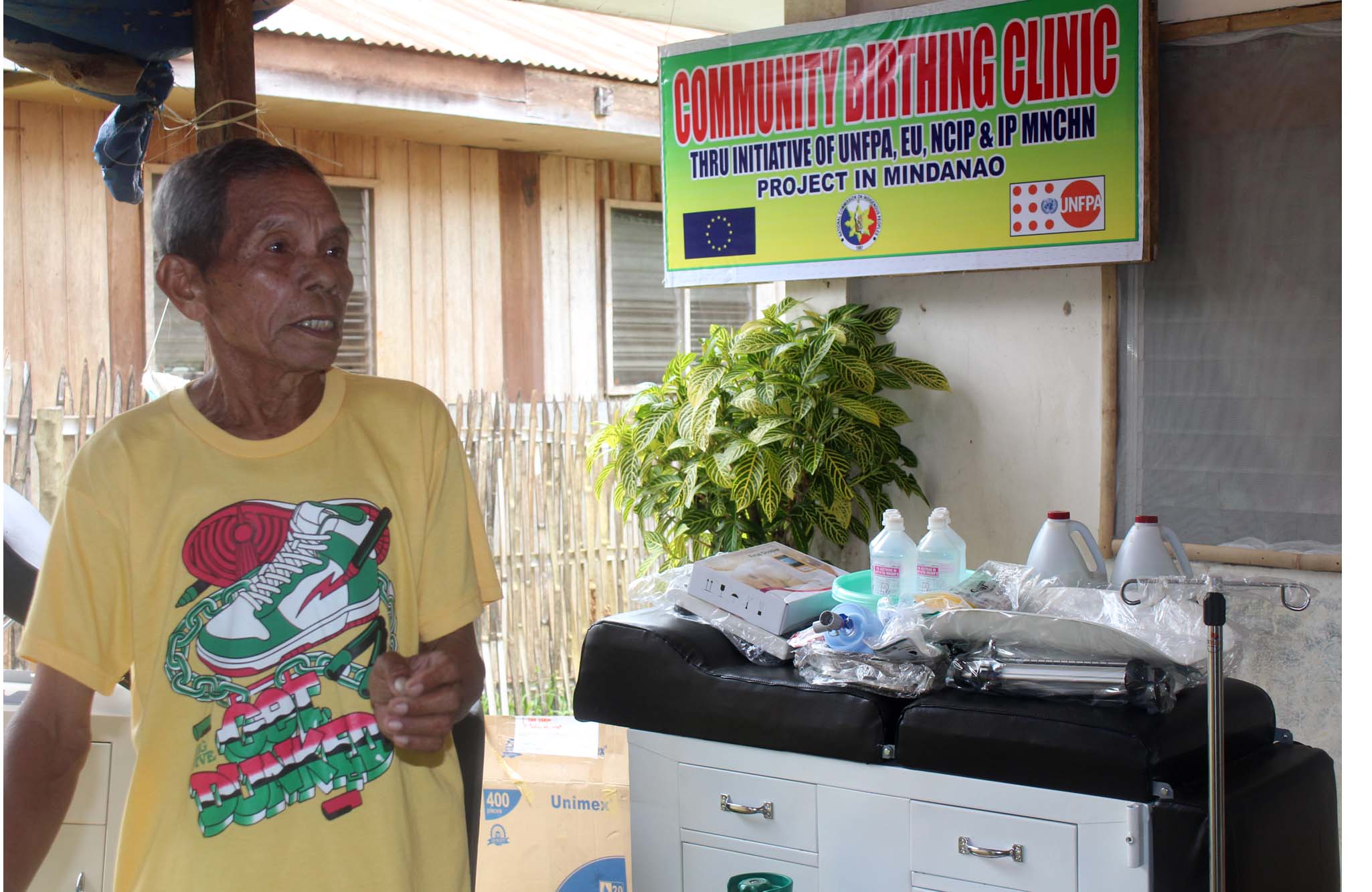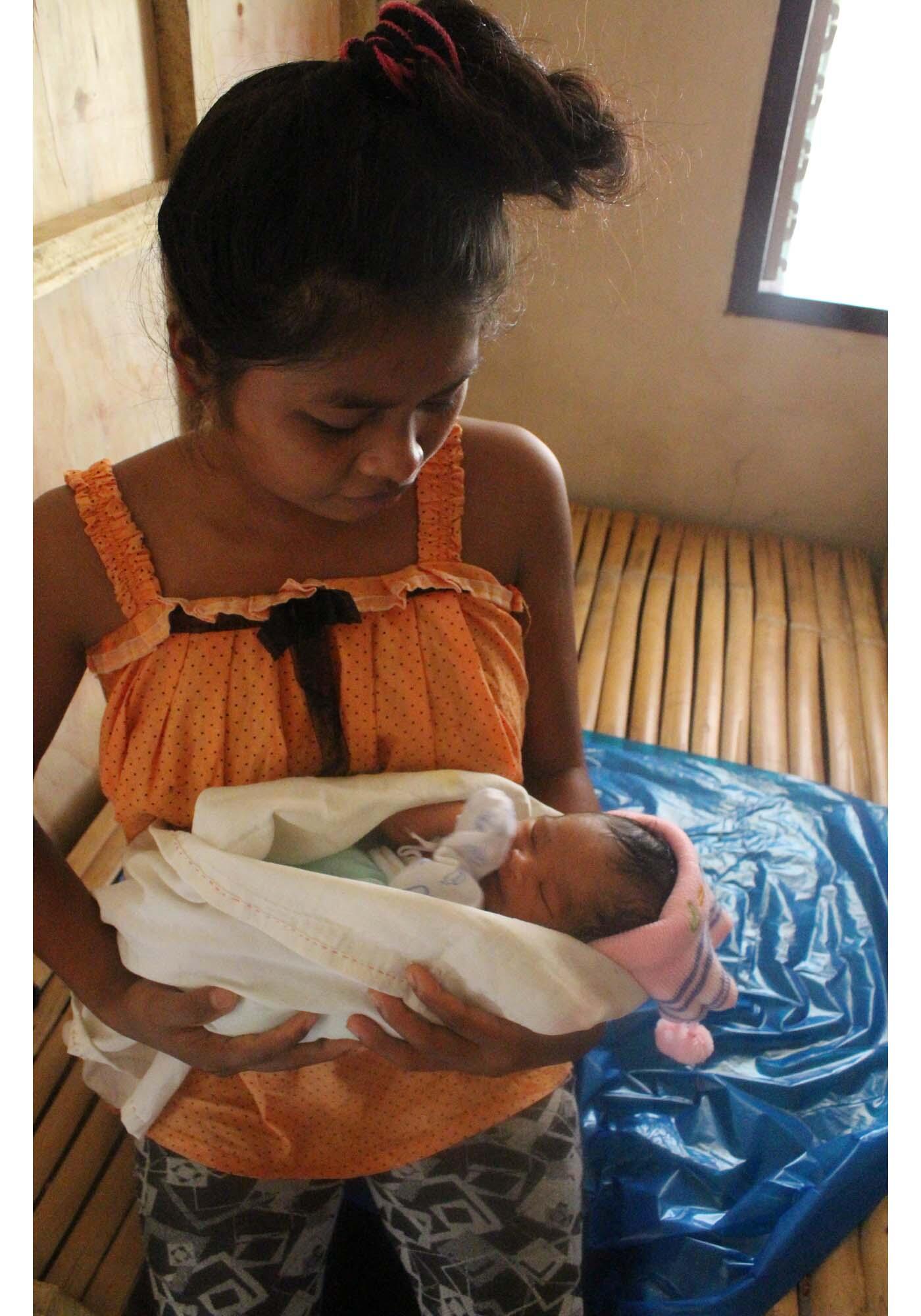Sitio Gawasan is three to four hours on foot to the Barangay Bentangan Health Center. Roads are rough and access is only via walking or a bumpy ride on a motorcycle through wide, unpaved roads at times made soft and muddy by the rains.
The Arumanens, the indigenous peoples of Gawasan, have always aspired for a culture-sensitive birthing facility. Tribal Chieftain Timuey Elino Pendaupan recalled how more than a year ago, tribal elders along with Dr Noel Espallardo, Senior Specialist on Reproductive Health and other representatives of the EU-funded IP MNCHN Project Mindanao from NCIP and UNFPA, talked about having a birthing facility in Sitio Gawasan.
Through the efforts of the community, it materialized this year, providing the Arumanens an alternative to home delivery, and spared Aileen the three hour hike to the village health center.
When a structure in the sitio – a remnant of a government project – was turned over to them, local leaders of Gawasan assigned it as the birthing facility and health center.
Baluan also narrated that one time, a traditional birth attendant came with the expectant mother. “Women’s support systems especially their families are welcome here,” she said.
With new equipment, the facility now provides women an option to give birth on a “native” delivery bed made of bamboo, or on a “standard” delivery bed.

During the turnover, UNFPA IP MNCHN Project Manager Dr. Cemellie Bernadette Sabay iterated that it is the community’s health center and birthing facility, and encouraged them to utilize the equipment and services.
Aileen doesn’t want a big family. She said she will be using family planning methods when the time comes. She will be going to the health center for her baby’s immunizations.
With a birthing facility in the sitio and more equipment and supplies, the road to better health has been paved for Aileen, her daughter and all Arumanen women, men and children in Gawasan.
The Indigenous Peoples Maternal Neonatal and Child Health and Nutrition (IP MNCHN) project is funded by the European Union. It is implemented by the National Commission on Indigenous Peoples and jointly managed by UNFPA.


